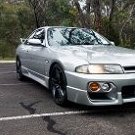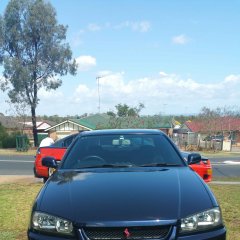Alternator Belt Adjustment - Nut Required?
Announcements
-
Similar Content
-
Latest Posts
-
me too wasnt real happy and cost me a penny or 2 to replace
-
But there's the archetype for the name plate! Here's my view on that stupid TÜV ruleset. Buy a brand name aftermarket piece of equipment. In this case, the Mines front pipe we're talking about. Get it TÜV certified on the car. Damage the underside of it, say on a speed bump. Cut out the damaged section, replace with fresh metal. (For the sake of the argument only), continue doing that to the whole pipe until it is all gone, replaced with new metal. Is this grandfather's axe still the same front pipe? The design hasn't changed (much). The pipe walls are in the same places. The flanges are in the same places. It is functionally identical. How does this differ from a pipe that is ever so slightly different in fabrication (ie the number of welds in it, a few mm here and there in terms of where the pipes run, are joined, etc)? Anyone with 0.5% of a brain can see that there is absolutely no way that the performance (power, environmental aspects, noise, etc etc) of it can be any different than the genuine Mines pipe. Maybe even Mines made 2 versions of this design, with the same differences. How would anyone (say a TÜV inspector) ever be able to differentiate between them? And yet, they are so bloody anally retentive about this stuff. Mad. How upset would they be if you had the wrong spring washers on the flanges?
-
Sakura (cherry blossom) tree at the end of a path going through Kabutoyama Park in Nishinomiya, Japan. Taken with Sharp Aquos R8
-
After a fairly extensive search using Japanese terms and checking Minkara etc, I couldn't find anything even close to your front pipe in the photos. I'm no expert but the two pipes merge really close to the flange connected to the catalytic converter which is rather unique from what I've seen, which makes me think it's more than likely a custom front pipe. The welds and 'more pipe sections than usual for a brand name pipe' makes it seem like a custom one. Here's some photos of an old Mine's front pipe. You can see that it's just 4 pipe sections as opposed to 6, and arguably looks more like a 'production' front pipe:
-







Recommended Posts
Create an account or sign in to comment
You need to be a member in order to leave a comment
Create an account
Sign up for a new account in our community. It's easy!
Register a new accountSign in
Already have an account? Sign in here.
Sign In Now